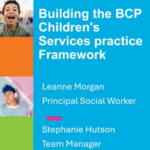The presence in a dead or injured baby of the specific head
injuries previously regarded as evidence of shaken baby syndrome
must no longer result in an automatic diagnosis, the Court of
Appeal ruled last week.
Ruling in a test case of four people who claimed they were wrongly
found guilty of harming or killing their babies, Lord Justice Gage
accepted that the set of key injuries – swelling of the
brain, bleeding between the brain and the skull and bleeding in the
retina of the eye – could be caused by the use of less force
than had previously been thought.
As a result, the injuries’ presence “does not
automatically or necessarily lead to a diagnosis of non-accidental
head injury and/or a conclusion of unlawful killing,” Justice
Gage said.
The judge quashed two convictions, for manslaughter and for
grievous bodily harm, and reduced a third conviction from murder to
manslaughter. In the fourth case, a manslaughter conviction was
upheld.
The ruling has implications for more than 90 other convictions in
which the issue of shaken baby syndrome was also raised. It could
also affect hundreds of cases in which a parent has been denied
access to a child on the basis of allegedly violent
treatment.
Dr Harvey Marcovitch, spokesperson for the Royal College of
Paediatrics and Child Health, said the ruling underlined the need
for expert witnesses to make it clear to juries when there was a
range of medical opinions on the possible causes of an
injury.
Justice Gage refused to give new guidance on the use of expert
witnesses in the future or to say whether there had been a failure
to control and manage expert evidence in the four cases.



 Bournemouth, Christchurch and Poole
Bournemouth, Christchurch and Poole  Hampshire County Council
Hampshire County Council  Oxfordshire County Council
Oxfordshire County Council  South Gloucestershire Council
South Gloucestershire Council  Wokingham Borough Council
Wokingham Borough Council  Webinar: building a practice framework with the influence of practitioner voice
Webinar: building a practice framework with the influence of practitioner voice  ‘They don’t have to retell their story’: building long-lasting relationships with children and young people
‘They don’t have to retell their story’: building long-lasting relationships with children and young people  Podcast: returning to social work after becoming a first-time parent
Podcast: returning to social work after becoming a first-time parent  How managers are inspiring social workers to progress in their careers
How managers are inspiring social workers to progress in their careers  Workforce Insights – showcasing a selection of the sector’s top recruiters
Workforce Insights – showcasing a selection of the sector’s top recruiters 

 Facebook
Facebook X
X LinkedIn
LinkedIn Instagram
Instagram
Comments are closed.